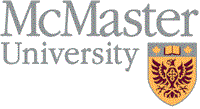Misconduct in medical research has been subject of many papers in recent
years. Some types of fraud which have been reported are data fabrication
and data falsification, plagiarism, deceptive reporting of results,
suppression of existing data, and deceptive design or analysis.
In this presentation we emphasize on one extreme case of fraud; data
fabrication. Our main objective is to find out how closely the correlation
structures could be reconstructed by fabricated data. In order to
investigate the correlation structures of fabricated data-sets, the summary
statistics of two real data-sets were shown to faculty members at two medical
schools and they were asked to make-up similar data-sets on their own. In
the first example we considered two variables which were highly correlated;
the height and the weight of 65 female students aged 19-22 (r = 0.43). The
correlation coefficient for the 34 made-up data-sets ranged from -0.097
to 0.996. Most participants produced correlation coefficient greater than
that of the real data-set. In the second example we considered two variables
which were not correlated; the gestational ages (GA) and the weights of 637
newborn boys (r = 0.031). Each participant was asked to write down GA and
weight for 40 babies in the ranges of the real data-set. The correlations
between GA and weight for the 34 collected fabricated data-sets were in the
range of -0.36 to 0.98. In conclusion made-up data-sets yield considerably
higher correlation coefficients than the corresponding real data-sets.
This is joint work with Mahshid Dehghan-Kooshkghazi.




